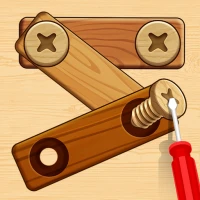
Latest Version
0.0.1
July 25, 2025
Casual Games For Fun
Games
Android
0
Free
com.idle.gear.merge.fever
Report a Problem
More About Idle Gear
Mastering Gear Mechanics: A Comprehensive Guide to Gear Acquisition and Merging
In the fascinating world of gear mechanics, understanding how to effectively acquire and merge gears is crucial for optimizing performance. This article delves into the intricacies of buying gears, linking them to larger gears, and the importance of continuous upgrades to achieve a fully optimized system.
Understanding Gear Acquisition
To begin your journey in gear mechanics, it’s essential to grasp the concept of gear acquisition. Purchasing gears is the first step in building a robust system. Each gear serves a specific purpose, and selecting the right ones can significantly enhance your overall efficiency.
The Importance of Selecting the Right Gears
When buying gears, consider their size, material, and functionality. Larger gears typically provide more torque and can drive smaller gears effectively. By strategically selecting gears that complement each other, you can create a seamless operation that maximizes output.
Linking Gears for Enhanced Performance
Once you have acquired a selection of gears, the next step is to link them to larger gears. This connection is vital as it allows the rotation of the larger gears to drive the smaller ones, creating a powerful and efficient system.
How to Link Gears Effectively
To link gears effectively, ensure that they are aligned properly. Misalignment can lead to increased wear and tear, reducing the lifespan of your gears. Additionally, consider the gear ratio; the relationship between the sizes of the gears will determine the speed and torque of the system. A well-calibrated gear ratio can lead to optimal performance.
The Process of Merging Gears
As you progress in your gear mechanics journey, merging gears becomes a crucial aspect of your strategy. Merging allows you to combine the strengths of multiple gears into a single, more powerful unit.
Benefits of Merging Gears
Merging gears not only enhances performance but also simplifies your system. By consolidating multiple gears into one, you reduce the complexity of your setup, making it easier to manage and maintain. Furthermore, a merged gear can often provide superior performance compared to its individual components.
Continuous Upgrades: The Key to Success
In the realm of gear mechanics, stagnation is not an option. Continuously buying new gears and merging them is essential for keeping your system at peak performance. As technology advances, new gear designs and materials become available, offering improved efficiency and durability.
Strategies for Continuous Gear Acquisition
To ensure that your gear system remains competitive, adopt a proactive approach to gear acquisition. Regularly assess your current setup and identify areas for improvement. Attend industry expos, read up on the latest gear technologies, and network with other enthusiasts to stay informed about new products and innovations.
Covering the Screen: Achieving Full Optimization
The ultimate goal in gear mechanics is to cover the screen with a fully optimized system. This means that every gear in your setup is functioning at its best, contributing to a powerful and efficient operation.
Monitoring Performance and Making Adjustments
To achieve this level of optimization, it’s crucial to monitor the performance of your gears regularly. Use performance metrics to evaluate how well your system is functioning. If certain gears are underperforming, consider replacing or merging them with more efficient options. This iterative process will help you maintain a high-performing gear system.
Conclusion
Mastering gear mechanics involves a strategic approach to buying, linking, and merging gears. By continuously upgrading your system and monitoring performance, you can achieve a fully optimized setup that maximizes efficiency and output. Embrace the journey of gear acquisition and merging, and watch as your system transforms into a powerhouse of performance.
Rate the App
User Reviews
Popular Apps










Editor's Choice































